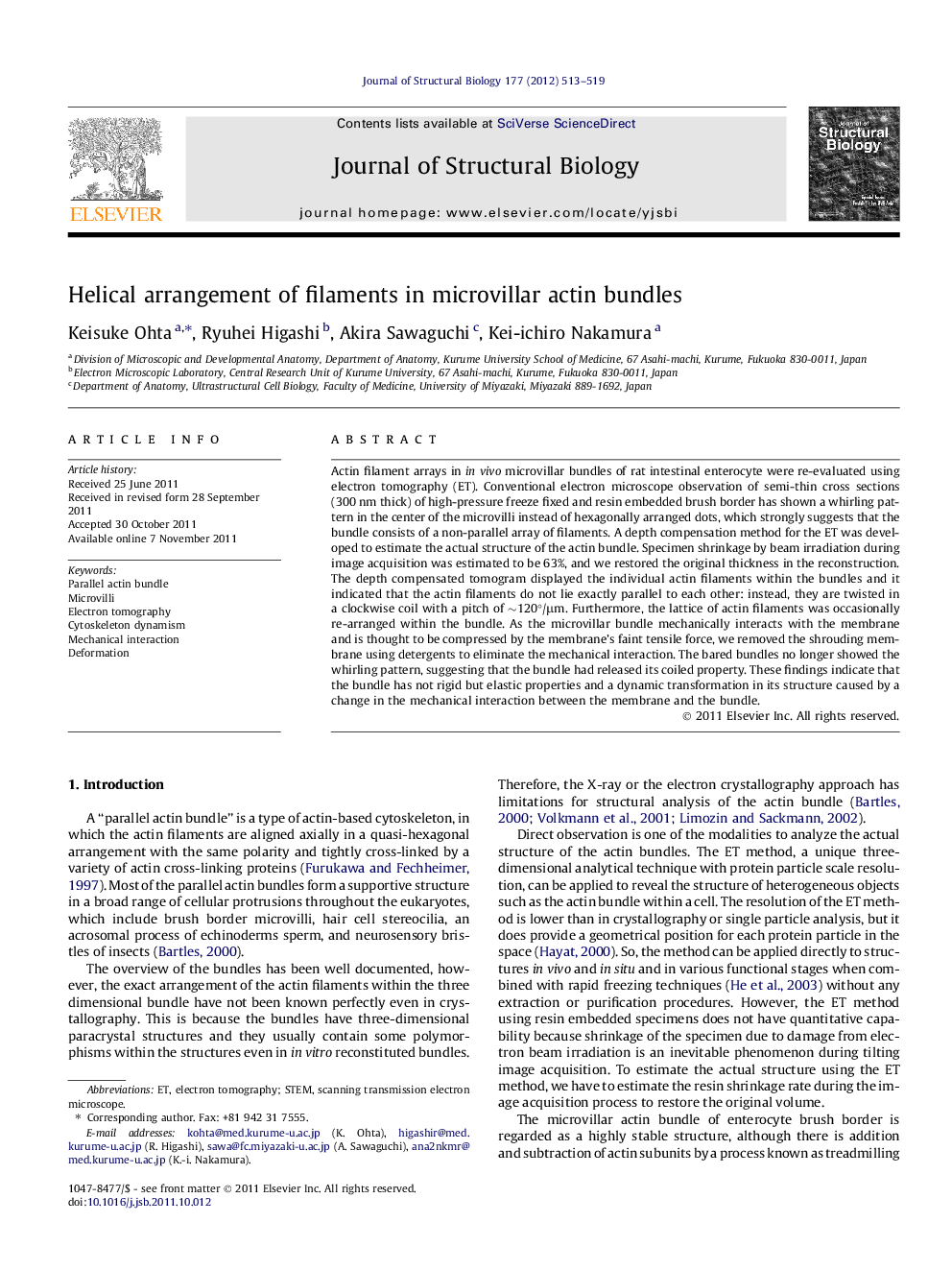| Article ID | Journal | Published Year | Pages | File Type |
|---|---|---|---|---|
| 5914528 | Journal of Structural Biology | 2012 | 7 Pages |
Actin filament arrays in in vivo microvillar bundles of rat intestinal enterocyte were re-evaluated using electron tomography (ET). Conventional electron microscope observation of semi-thin cross sections (300 nm thick) of high-pressure freeze fixed and resin embedded brush border has shown a whirling pattern in the center of the microvilli instead of hexagonally arranged dots, which strongly suggests that the bundle consists of a non-parallel array of filaments. A depth compensation method for the ET was developed to estimate the actual structure of the actin bundle. Specimen shrinkage by beam irradiation during image acquisition was estimated to be 63%, and we restored the original thickness in the reconstruction. The depth compensated tomogram displayed the individual actin filaments within the bundles and it indicated that the actin filaments do not lie exactly parallel to each other: instead, they are twisted in a clockwise coil with a pitch of â¼120°/μm. Furthermore, the lattice of actin filaments was occasionally re-arranged within the bundle. As the microvillar bundle mechanically interacts with the membrane and is thought to be compressed by the membrane's faint tensile force, we removed the shrouding membrane using detergents to eliminate the mechanical interaction. The bared bundles no longer showed the whirling pattern, suggesting that the bundle had released its coiled property. These findings indicate that the bundle has not rigid but elastic properties and a dynamic transformation in its structure caused by a change in the mechanical interaction between the membrane and the bundle.
